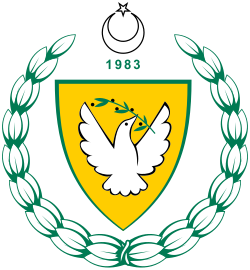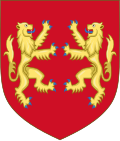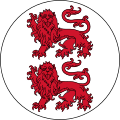Republic of Cyprus
| Coat of arms of the Republic of Cyprus | |
|---|---|
 | |
| Armiger | Republic of Cyprus |
| Adopted | 1960 (original) 2006 (modern) |
| Shield | Copper, a dove volant facing to the sinister Argent in its beak an olive branch; in base, the numbers '1960' Argent [1] |
| Supporters | A wreath of olive branches vert |
The coat of arms of the Republic of Cyprus depicts a dove carrying an olive branch, symbolizing peace, over "1960", the year of Cypriot independence from British rule. The background is a copper-yellow colour; this symbolises the large deposits of copper ore on Cyprus (chiefly in the form of chalcopyrite, which is yellow in colour). The two-part wreath represents the two ethnic groups of Cyprus, Greeks and Turks. [2]
The Cypriot coat of arms was selected as the main motif of a high value collectors' coin in 2008, the Cyprus introduction to the Eurozone commemorative coin, minted in 2008. The obverse depicts the coat of arms of Cyprus while the reverse depicts Cyprus connected with a ring to Europe, on a transfigured map.
- Coat of arms of the Republic of Cyprus (1960–2006)
- Coat of arms of the Cyprus Prisons Department





















